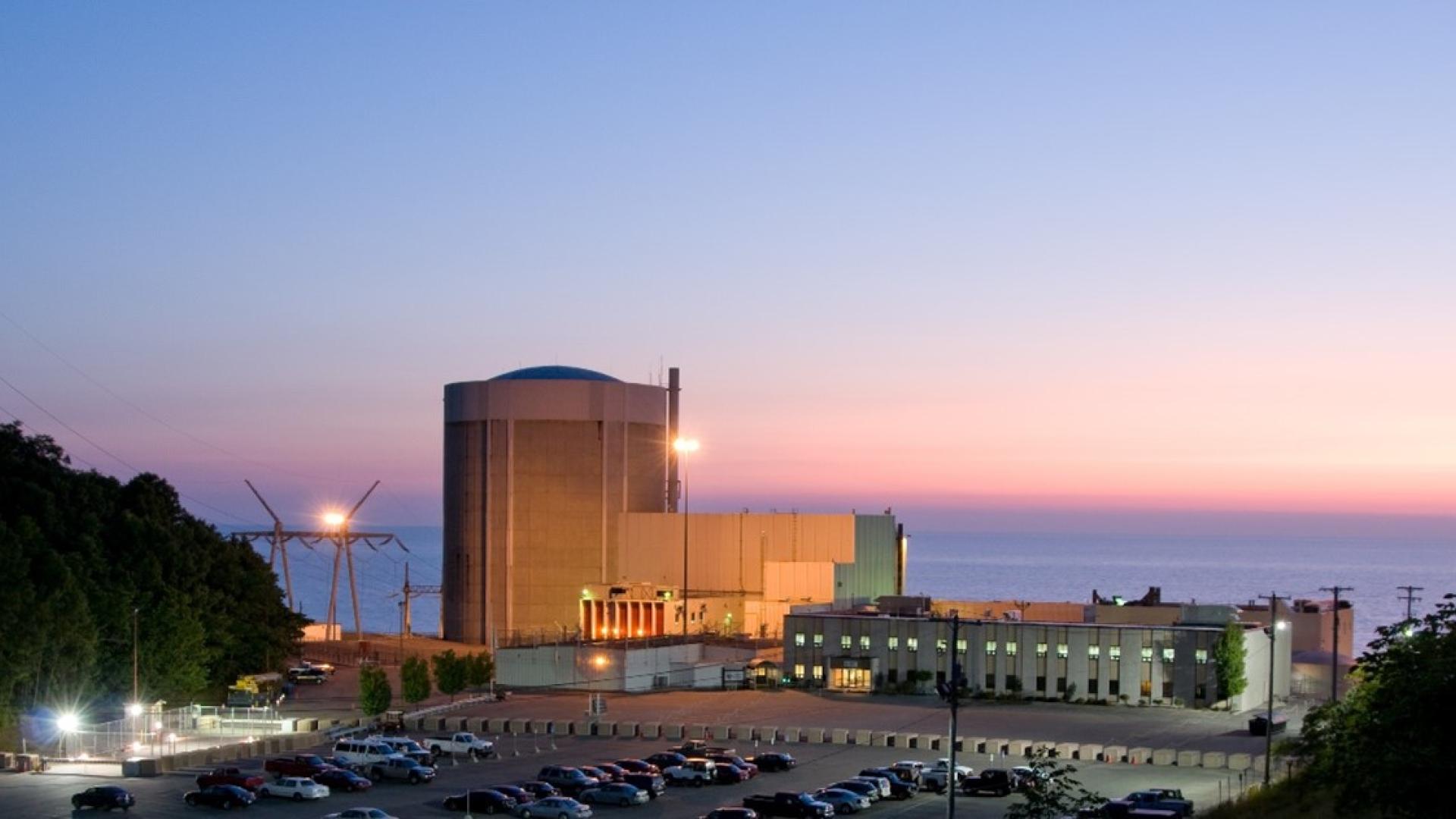Indian Point nuclear power plant. (Photo: Daniel Case)
The Nuclear Regulatory Commission hasgranted a request by Holtec Decommissioning International (HDI) to revise the emergency preparedness plan for the Indian Point Energy Center. Reflecting the reduced risk of a radiological emergency at a decommissioning power reactor site, the exemption removes the requirement that HDI maintain a 10-mile emergency planning zone around the plant.
The Holtec HI-LIFT at Indian Point-3. (Image: Holtec)
Holtec International has said its patented HI-LIFT crane technology, being installed at the Indian Point-3 nuclear power plant, will speed the defueling of the spent nuclear fuel pool and avoid millions in excess decommissioning costs.
On the left, equipment being installed at Indian Point-3 on April 26, 1971. Unit 3 began operation in August 1976. On the right, some of the same equipment being removed as part of the decommissioning process, November 2022. (Photo: Indian Point Energy Center)
Holtec continues the decommissioning work at Indian Point nuclear power plant in Buchanan, N.Y.
Unit 2, a 1,028-MWe pressurized water reactor, was shut down in April 2020; Unit 3, a 1,041-MWe PWR, was closed one year later. (Unit 1 was decommissioned in 1974.)
The Palisades nuclear power plant. (Photo: Entergy)
Maybe hold off commenting on those Palisades decommissioning plans for now: Michigan Gov. Gretchen Whitmer last Friday penned a letter to energy secretary Jennifer Granholm pledging state support for a Holtec International plan to restart the recently shuttered Palisades nuclear plant in Covert, Mich. It was Whitmer’s second letter to the Department of Energy head expressing support for Palisades and touting its value to the state.
Indian Point nuclear power plant. (Photo: Daniel Case)
“If we’re serious about dealing with climate change, then we’re going to need all the tools in the toolbox, which includes nuclear, not just now but in the future,” Keith Schue, an electrical engineer affiliated with Nuclear New York is quoted as saying in an article on the (Lower Hudson Valley) Journal News website, lohud. Schue adds, “We do believe that closing Indian Point was a mistake. But are we going to continue making mistakes or can we learn from them?”
Diablo Canyon nuclear plant. (Photo: PG&E)
Last April, Entergy had to close its Indian Point nuclear plant. That’s despite the plant’s being recognized as one of the best-run U.S. nuclear plants. That’s also despite its 20-year license extension process having been nearly completed, with full support from the Nuclear Regulatory Commission.
This closure was due in large part to opposition by antinuclear environmental groups. These groups also mobilized existing negative public opinion on nuclear energy to get politicians to oppose the plant’s license extension. Another factor is unfair market conditions. Nuclear energy doesn’t get due government support—unlike solar, wind, and hydro—despite delivering clean, zero-emissions energy.
The new sign at the Indian Point Energy Center. (Photo: Holtec)
The transfer of the Indian Point nuclear power plant from Entergy to Holtec International and its subsidiaries was completed last week. Under the asset transfer deal, Holtec Indian Point becomes owner of the closed plant, with Holtec Decommissioning International serving as the site’s license holder and decommissioning operator.
The above figure provides NYISO's projected mix of resource capacity expected to be available for the 2021 Summer Capability Period.
The figure below shows the vast difference in 2020 between clean energy provided to upstate New York and to downstate New York. With the recent closure of Indian Point-3, the difference will widen for downstate New York in 2021.
NYISO released its 2021 power trends report for the state of New York. As noted by many in the energy community prior to the closure of Indian Point nuclear power plant's Unit 2 and Unit 3 in 2020 and 2021, respectively, the projected mix of resource capacity expected for downstate New York's energy generation will be heavily reliant on fossil fuels.
Indian Point-3’s turbine hall and generator. Photo: Entergy
The disturbingly long list of U.S. nuclear plants prematurely closed in recent years will get even longer tonight when the last reactor at the Indian Point Energy Center, Unit 3, powers down for the final time. The shutdown, scheduled for 11 p.m. local time, will mark the end of nearly 60 years of zero-carbon electricity generation at the Buchanan, N.Y., facility.
Indian Point nuclear power plant in Buchanan, N.Y.
The State of New York will withdraw its lawsuit against the transfer of Indian Point’s license to Holtec International for decommissioning under a provisional agreement signed on April 14. In exchange, Holtec has agreed to maintain a minimum of $400 million in Indian Point’s decommissioning trust fund for the next 10 years.
The Indian Point nuclear power plant
With a blunt but indisputably accurate headline, an article from yesterday’s New York Times on the imminent closure of Indian Point makes it immediately clear what will happen when Unit 3, the nuclear plant’s last operating reactor, is shut down at the end of this month: The state of New York will be forced to rely more heavily on fossil fuels for electricity generation.
Following the retirement of Indian Point-2 last April, the share of New York’s power coming from gas-fired plants rose to about 40 percent, from about 36 percent in 2019, the piece notes, adding that the share from renewables moved up only slightly, to about 30 percent.










 Nuclear power plants around the world generated 2,553 TWh of electricity in 2020, a drop of 104 TWh from 2019’s total, according to
Nuclear power plants around the world generated 2,553 TWh of electricity in 2020, a drop of 104 TWh from 2019’s total, according to 






